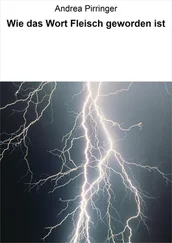Limit of Liability/Disclaimer of Warranty: While the publisher and author have used their best efforts in preparing this book, they make no representations or warranties with respect to the accuracy or completeness of the contents of this book and specifically disclaim any implied warranties of merchantability or fitness for a particular purpose. No warranty may be created or extended by sales representatives or written sales materials. The advice and strategies contained herein may not be suitable for your situation. You should consult with a professional where appropriate. Neither the publisher nor author shall be liable for any loss of profit or any other commercial damages, including but not limited to special, incidental, consequential, or other damages.
For general information on our other products and services or for technical support, please contact our Customer Care Department within the United States at (800) 762-2974, outside the United States at (317) 572-3993 or fax (317) 572-4002.
Wiley also publishes its books in a variety of electronic formats. Some content that appears in print may not be available in electronic formats. For more information about Wiley products, visit our web site at www.wiley.com.
Library of Congress Cataloging-in-Publication data applied for
ISBN 978-1-118-16381-8
Cover Design: Wiley
Cover Images: (Top image) © Sam Robinson/Getty Images, (Center image) © Chanin Wardkhian, © Ashwini H/Getty Images Design
As is common with emerging technologies, the maturity of safety considerations for a technology may lag the momentum in applying the technology. This has been true with the industrial, commercial, and residential electrification of modern society that began in the late nineteenth century. While human contact with electricity was known to be hazardous, differentiating arc flash from electric shock did not receive significant attention until a century later. We now know that injuries from arc flash events in electric power systems are among the most traumatic and costly occupational injuries. The intense energy transfer occurring in a fraction of a second converts electrical energy into thermal, blast, acoustic, chemical, and electromagnetic components that individually have their own injury consequences. Collectively, these energy transfers to the human body produce complex physical, neurological, and emotional trauma that are very difficult and costly to treat and rehabilitate. The resulting tragedy not only impacts the injured person, it extends to family, friends, and coworkers. And that is just the human side. Arc flash events also damage vital infrastructure, disrupting operations and damaging critical equipment. Altogether, the consequences in human suffering, equipment damage, and disruption of essential electrical systems can be extraordinary. But they can be prevented.
Increasing awareness of arc flash hazards has inspired improvements in administrative control measures, including safe work practices and application of personal protective equipment. These are important components of a comprehensive solution in reducing the risk of injury, but they have limitations. Administrative control measures are susceptible to human error that occur in real time with little opportunity for recovery from gaps in knowledge, misinterpretation of conditions, or lapse in discipline. Personal protective equipment for arc flash events is currently limited to thermal and acoustic hazards and may only reduce severity of injury as opposed to completely protecting the individual from injury. Injuries from the blast forces and respiratory harm from toxic chemicals and hot gases have been difficult to address with personal protective equipment. There is a more comprehensive answer, one that includes engineering solutions that reduce the potential for an arc flash event, minimize total energy transfer, and reduce the frequency of exposure.
Increasing awareness of arc flash events and consequences has generated research and publication across engineering, science, health and safety, medical, and legal disciplines. J.C. Das has researched this body of knowledge and brought together innovative ideas and practical concepts with abundant references and real world case studies in arc flash analysis and mitigation. For the first time, design engineers, facility managers, safety professionals, and operating and maintenance personnel have a comprehensive reference for prevention methods. Arc Flash Hazard Analysis and Mitigation provides a comprehensive set of tools to aid in the design, evaluation, and redesign of electric power systems. There is no single “silver bullet” for arc flash mitigation, yet following the methodology and analyses discussed in the book, professional engineers and power system designers can design new industrial electrical systems and modify existing systems to limit arc flash hazard incident energy to no more than 8cal/cm 2. Chapter 15of the book presents innovative ideas for arc flash analyses in DC systems. The analysis tools enable comparison of mitigating technologies and choices in system design to optimize arc flash risk for the life of the facility. For the workers at risk, the engineering solutions serve to automatically reduce risk and function independently of their knowledge, skills, and vulnerability to human error.
We are on a journey in arc flash mitigation. Ongoing basic research will continue to explore the complexities of the arc flash phenomena. Equipment manufacturers will introduce more innovative products to eliminate or reduce exposure. Protection engineers will refine methods to sense and interrupt faults faster. Reliability engineers will help address the problem of hidden failures in circuit protection hardware, software, and schemes. Facility engineers will become more knowledgeable in demanding prevention through design. Workers will be better protected from arc flash hazards. Arc Flash Hazard Analysis and Mitigation provides a roadmap. For the next worker at risk of a permanently disabling, life-changing arc flash injury, we need to accelerate our journey.
H. Landis “Lanny” Floyd
June 2012
H. Landis “Lanny” Floydis Principal Consultant, Electrical Safety and Technology with DuPont. He is a fellow of IEEE and recipient of many awards, including the 2002 IEEE Richard Harold Kaufman award for advancing the development and application of electrical safety technology and the 2004 IEEE Medal for Engineering Excellence for contributions in arc flash analysis and mitigation. He has written more than 70 papers and articles on workplace electrical safety. He is also the Editor of the IEEE Industry Applications Magazine. He is a nationally and internationally recognized safety expert.
PREFACE TO SECOND EDITION
The authors and researchers all over the world expressed concerns on IEEE Guide 1584, 2002 methodology, test methods, and calculations of incident energy for arc flash hazard.
As a result, a joint venture by IEEE and NFPA was constituted. This addressed the concerns levied on 2000 edition of IEEE 584, and the 2018 edition is totally revised with respect to 2002 edition. This revision is being recognized all over the world. This second edition addresses the arc flash hazard calculations according to this revised edition. Major changes in concepts and methodology have occurred.
J.C. Das
The arc flash hazard analysis has taken the industry by storm, as evidenced by a spate of technical papers in the current literature, especially in IEEE Industry Application Society Petroleum and Chemical Industry, Industrial and Commercial Power Systems, Pulp and Paper Industry Technical Conferences, and the IAS Safety Workshop. The concerns of worker safety in electrical environment are making new strides with respect to equipment innovations, electrical system designs, and arc flash analysis and its mitigation. This impetus has attracted the attention of the industry to bring forward new product innovations, and it has challenged the expertise of practicing and consulting engineers to innovate electrical power system designs and relay protections. The current technical papers and literature address one or the other aspect of this subject. There is no comprehensive published work on this important subject.
Читать дальше












